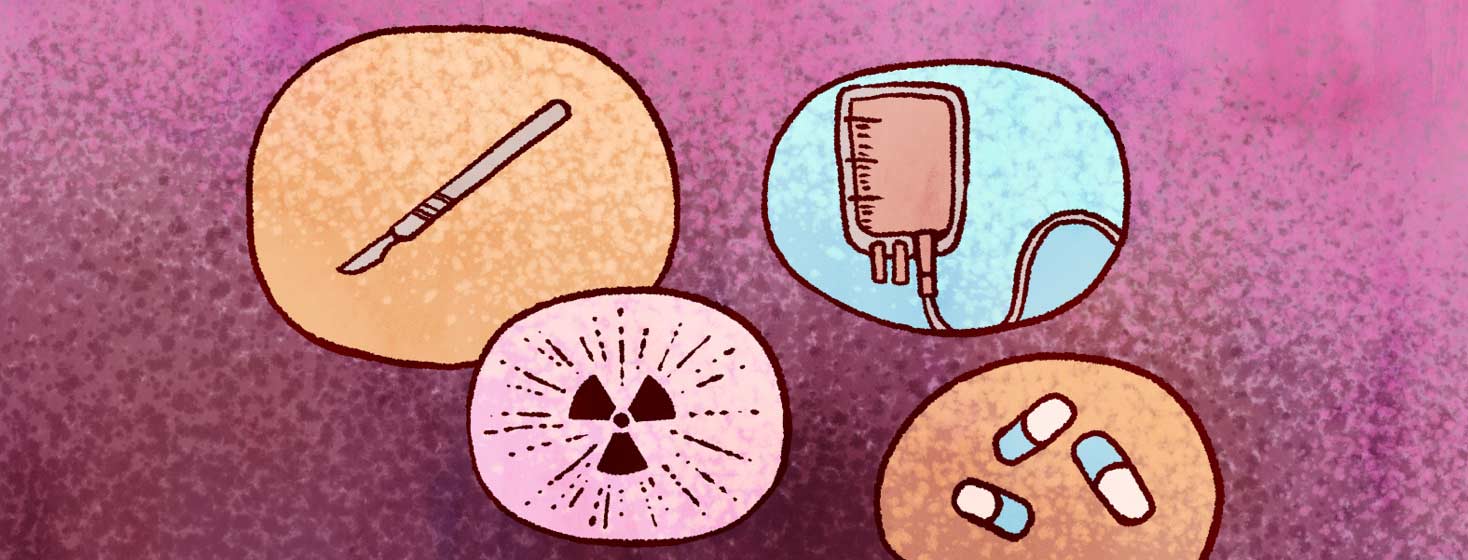Lung Cancer Traditional Treatment Experiences
Undergoing lung cancer treatment can feel like a long and sometimes challenging journey. There are many decisions along the way, including choosing the treatments that you and your doctor feel are the right ones for you. While each treatment journey is unique, many of those in the lung cancer community share similar experiences.
In our 4th Annual Lung Cancer In America survey, we explored the traditional and most commonly used treatments, including surgery, chemotherapy, and radiation, used by our community members. More than 800 people with lung cancer completed the survey and shared insights into their treatment journey. Following the survey, we turned to community members on our Facebook page and asked them to weigh in with their treatment experiences.
What traditional lung cancer treatment options are available?
Doctors may recommend 1 type of lung cancer therapy over another, depending on a person’s health and prognosis. The type and stage of lung cancer may dictate which treatment approach could work best. In some cases, more than 1 treatment option can be used. Some of the most frequently used and traditional lung cancer treatment options include:
- Chemotherapy
- Surgery
- Radiation
Chemotherapy for lung cancer treatment
“In 2017 at the age of 54, [I had my] entire left lung removed, followed by 4 chemo treatments of Cisplatin and Taxotere.”
Nearly 70 percent of survey respondents shared that they have had chemotherapy for lung cancer, making it the most commonly used treatment. However, only 41 percent of respondents used chemotherapy as their first treatment. Multiple rounds of chemotherapy or additional chemotherapy treatments were not uncommon.
Respondents indicated that Cisplatin, Vepesid (etoposide), Taxotere (docetaxel), Xalkori (crizotinib), and Tarceva (erlotinib) were some of the most frequently used chemotherapy drugs.
- 68 percent have had chemotherapy
- 74 percent said chemotherapy was discussed at diagnosis
Surgery for lung cancer treatment
“I had my upper right lung removed over 4 years ago. No chemo or radiation was needed.”
Having surgery for lung cancer is very common, with more than half of survey respondents answering that they had a surgical procedure for lung cancer. Pulmonary lobectomy was the most common.
Surgery was also the first treatment method used by 40 percent of respondents. Some shared that they also had to undergo additional treatment, including radiation, chemotherapy, even more surgery.
- 32 percent had a pulmonary lobectomy
- 16 percent had wedge resection
Radiation therapy for lung cancer treatment
“[I] had 6 chemo and 36 radiation treatments, been in remission since March 2017. Blessed every day.”
More than half of survey respondents said they have used radiation therapy for lung cancer treatment, but about one-third are unsure of the type of radiation that was used.
Radiation was the first treatment used in nearly 30 percent of survey respondents, with external beam radiation therapy (EBRT) being the most common. Stereotactic body radiation therapy (SBRT) was the second most common. Some community members said they had stereotactic radiosurgery, CyberKnife, or Gamma Knife.
Deciding on a treatment
The type and stage of lung cancer may narrow down treatment options, but many people living with lung cancer may have some say in their treatment decisions. Survey respondents indicated that selecting which treatment route to take can feel less challenging with input from others.
- 89 percent said their doctor helped select a treatment plan
- 43 percent had friends and family help choose a treatment plan
The effectiveness of treatment drugs was the most important factor for most respondents deciding on treatment. Insurance coverage also played a role in selecting a treatment.
- 49 percent said drug efficacy was a top decision factor
- 23 percent said there was only 1 treatment option available
- 12 percent said insurance coverage influenced their decision
The 4th Annual Lung Cancer In America survey was held online from January through June 2020. The survey was completed by 804 people.
This or That
Which would you like to learn more about?

Join the conversation